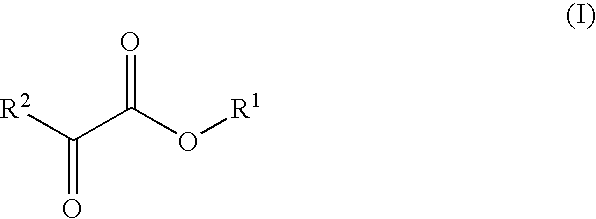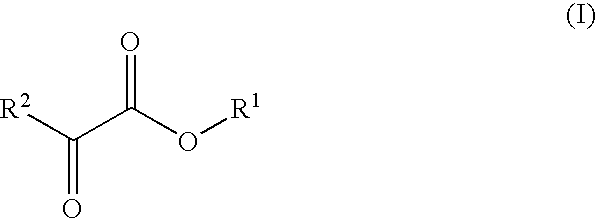Novel dehydrogenase and a gene encodign the same
a technology of dehydrogenase and gene, applied in the field of new dehydrogenase, a dna encoding the same, can solve the problems of narrow application range, limited specificity of known amino acid dehydrogenases and n-methyl amino acid dehydrogenases, and inability to use the above known enzymes. to achieve industrially advantageous n-methylamination, the effect of reducing the number of enzymes
- Summary
- Abstract
- Description
- Claims
- Application Information
AI Technical Summary
Benefits of technology
Problems solved by technology
Method used
Image
Examples
example 1
Purification of Enzyme
(1-1)
[0206]Pseudomonas putida ATCC 12633 strain was inoculated into 2×100 mL sterilized liquid medium (containing 5 g / L of methylamine hydrochloride, 1 g / L of glucose, 5 g / L of yeast extract, 7 g / L of dipotassium hydrogenphosphate, 3 g / L of potassium dihydrogenphosphate, and 0.1 g / L of magnesium sulfate heptahydrate) (in 500-mL Sakaguchi flasks), and aerobically cultivated with shaking at 28° C. for 18 hours (first preculture). Next, 50 mL of the culture obtained from the first preculture was inoculated into each of 4×2-L Sakaguchi flasks containing 500 mL of sterilized liquid medium of the same composition (in 2 L Sakaguchi flasks), and cultured with shaking under aerobic condition at 28° C. for 8 hours (second preculture). 200 liters of a medium supplemented with 1% polypeptone (Nacalai Tesque, Inc.), 0.5% yeast extract (Nacalai Tesque, Inc.), and 1% sodium chloride (Nacalai Tesque, Inc.) (hereinafter abbreviated as LB medium) was sterilized, inoculated wi...
example 2
SDS-PAGE and Analysis of Partial Amino Acid Sequence
[0220] All the samples from the respective enzyme purification steps were subjected to SDS-polyacrylamide gel electrophoresis.
[0221] A band at approximately 35 to 40 kDa, which increased in amount with the degree of purification, was excised by ordinary methods, and amino acid sequence analysis by Edman method was performed on a protein sequencer to determine the N-terminal amino acid sequence. The sequence is shown as SEQ ID No. 3 in the sequence listing.
[0222] The results of BLAST SEARCH suggested that this protein was highly homologous to malate dehydrogenase.
example 3
Cloning of Enzyme Gene
[0223] Chromosomal DNA was prepared from Pseudomonas putida ATCC 12633 strain by cultivating it in LB medium and treating the obtained cells with DNeasy Tissue Kit (Qiagen).
[0224] Primers were synthesized based on the nucleotide sequence encoding the N-terminal amino acid sequence determined in Example 2 and the amino acid sequence found from BLAST SEARCH. The respective nucleotide sequences are shown as SEQ ID No. 4 (NMPDHf) and 5 (NMPDHr1) in the sequence listing.
[0225] Using the chromosomal DNA from Pseudomonas putida ATCC 12633 strain as a template, 30 cycles of PCR (98° C., 20 seconds; 68° C., 3 minutes) were carried out using NMPDHf and NMPDHr1 as primers to obtain specifically amplified samples.
[0226] The DNA fragments obtained above were introduced into a cloning vector pET21a (Takara Shuzo Co. Ltd.) according to ordinary methods (this plasmid was designated as pENMadh).
[0227] Then, Escherichia coli (Escherichia coli) BL21 (DE3) (Novagen) was trans...
PUM
| Property | Measurement | Unit |
|---|---|---|
| pH | aaaaa | aaaaa |
| temperature | aaaaa | aaaaa |
| temperatures | aaaaa | aaaaa |
Abstract
Description
Claims
Application Information
 Login to View More
Login to View More - R&D
- Intellectual Property
- Life Sciences
- Materials
- Tech Scout
- Unparalleled Data Quality
- Higher Quality Content
- 60% Fewer Hallucinations
Browse by: Latest US Patents, China's latest patents, Technical Efficacy Thesaurus, Application Domain, Technology Topic, Popular Technical Reports.
© 2025 PatSnap. All rights reserved.Legal|Privacy policy|Modern Slavery Act Transparency Statement|Sitemap|About US| Contact US: help@patsnap.com



